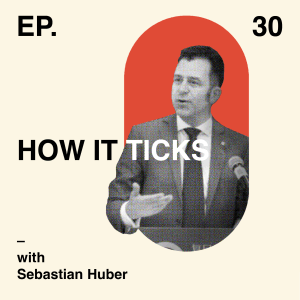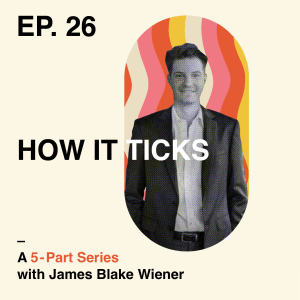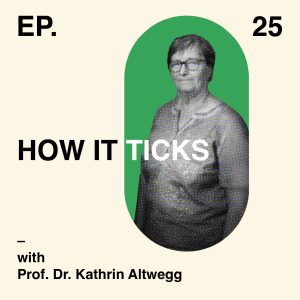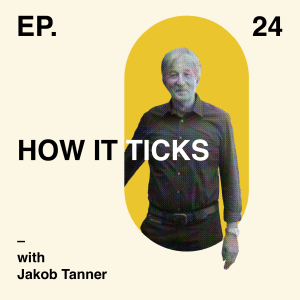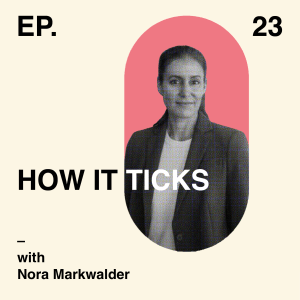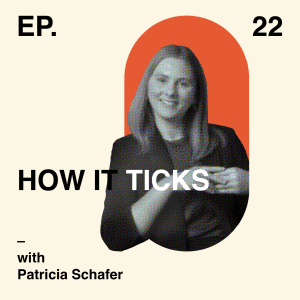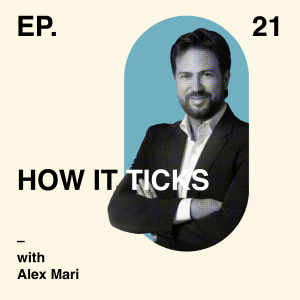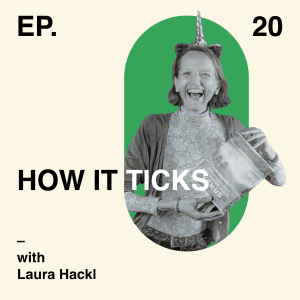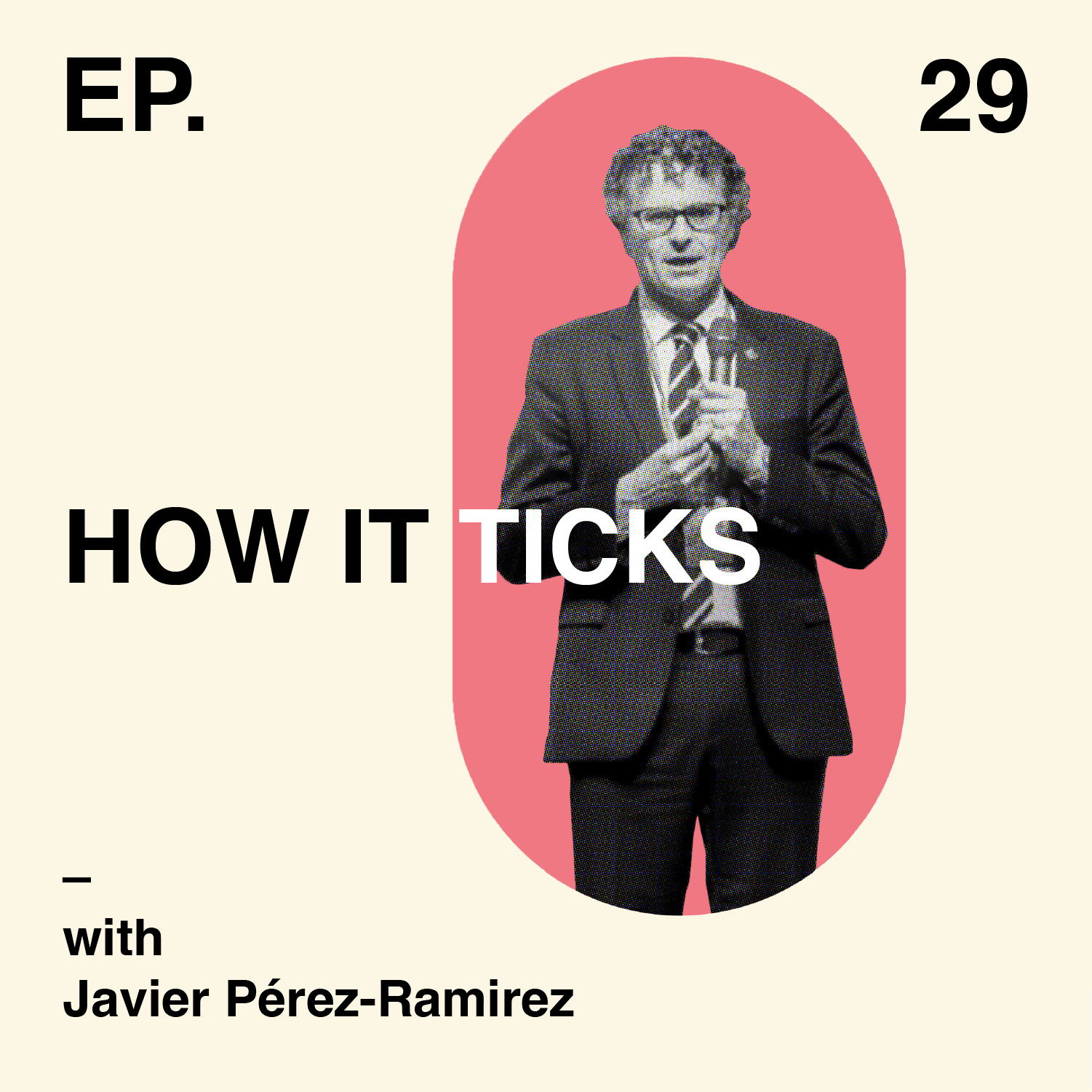
The Truth About Plastic in Switzerland | Javier Pérez-Ramírez (#29)
Episode Summary
In this episode, I sit down with Javier Pérez-Ramírez, a full Professor of Catalysis Engineering at ETH Zurich and a highly cited researcher in the field of chemistry. His work focuses on developing sustainable chemical and energy processes to tackle some of our world’s biggest environmental challenges.
Expect to learn about the magnitude of the global plastic waste problem and the significant discrepancy between the plastic we collect and what is actually recycled. We dive into the science behind recyclability, the difference between mechanical and chemical recycling, and the technical barriers that have prevented scalable solutions until now. Javier also shares insights on which countries are leading the way, what Switzerland is doing to contribute, and the single most impactful action an individual can take to ensure their plastic waste has the best chance of being recycled.
Meet Javier Pérez-Ramírez
Javier Pérez-Ramírez is a full Professor of Catalysis Engineering at the Institute for Chemical and Bioengineering at ETH Zurich, director of the NCCR Catalysis, and Chair of the Editorial Board of Green Chemistry. A highly cited researcher in the field of chemistry, his work focuses on the nanoscale design of catalytic materials to enable sustainable chemical and energy production.
Full Transcript
Mike: [00:00:00] Can you put into perspective the magnitude of the plastic waste problem?
Javier: Of course, I’ll try my best. So, so plastics are, amazing materials, right? The comprise and a striking example of how humans have learned to design substances that are not found in nature, and they are essential in healthcare, transportation, electronics, food packaging. That’s why, you know, the global production keeps rising still today at around 4% per year.
Yet, this, success creates a challenge, which is the scale of the, of the plastic problem, which is very hard to, to wrap your head around. That is passive. You know, each year we create enough plastic waste to equal the weight of, every human on earth. So it’s, imagine that every person has a plastic green, and made entirely of trash.
Plastics, they come from fossil fuels, essentially [00:01:00] that means, oil, gas and coal. And these are the fossil fuels that we have used in industry traditionally. So the problem is not just the waste plastic, it also, it is also emissions. So if we burn all the plastics that we produced annually. It will release about 15% of the CO2 that our planet can safely absorb.
So it is like adding the plastic waste is like adding a, a, a, a whole new industrial nation to the world producing emissions and, while only a small fraction of that plastic reaches the ocean, you might have heard about microplastic, microplastics and so on. The trend is, is alarming. So our, at our current pace, the l MacArthur MacArthur Foundation warns, asked that by, 2050 there could be more [00:02:00] plastic than fish in the sea by weight. And well, here’s the bigger, the bigger picture. Plastic waste is just one part of a larger challenge, which is how we rethink our entire economy. And right now we operate on a take, make, dispose model, and a circular economy. Another concept that is very much used these days in the media flips that designing materials to be robust, reduce, repair, and ultimately recycle instead of being thrown away.
So plastics are the best, or the perfect test case for whether we can make that shift and the stakes could not be higher.
Mike: What is the current global rate for plastic recycling today? What, what percentage of plastic ever produced has ever been Do, do you have these numbers? [00:03:00] What, what has been, what’s been recycled historically?
Javier: This is I’m, I’m sorry, not being able to give a very good figure here, but right now the world is, only managing to recycle about 10% of plastics, and, and that is the excePETion for 2025. So that’s actually, a pretty good number, historically speaking. So to truly close the loop, which is reaching some or re going towards circularity, we would need rates, of recycling above 75%. So of all the plastic ever made. Only about 9% of the, of, of it has, has been recycled. And almost all of it, probably 8.9% of the 9% has, been recycled through mechanical recycling, which, as I told you before, [00:04:00] provides a plastic, a new plastic, which has a much lower quality than the original. So we recycle very little and we produce recycled plastics that are of lower quality than the original one.
Mike: When I hear 10%, I think that can’t be right. I feel like the amount of plastic that I put in my recycling bin at home is greater than 10% of all the plastic that I consume. So what is the discrepancy between the amount of plastic I am putting in the recycling bin versus that, that 10% that actually gets recycled?
Javier: Mm-hmm. Very good question. So many people think that if they put plastic in the recycling bin, it will be turned into new plastic. Well, that’s the whole thing of separating it. But the reality is much more complicated. The main bottleneck is recycling capacity. [00:05:00] There are, there aren’t simply enough facilities worldwide, worldwide to handle all the plastic that is collected, and then it comes the issue of quality.
So mechanical recycling only works well with clean and well shorted. Plastics, for instance, but in, but, but in practice actually plastics are often mixed with other plastics or contaminated with food. And they have labels which are different, different plastic from the bottle, for example, itself. And they have hundreds of additives. So shortening them out so that you can purely recycle pure plastics is extremely difficult and very costly. And the lower the quality of the, of the sorting, the lower the quality of the recycled product.[00:06:00]
Mike: I am guessing that each country sorts, plastic differently and invests different amounts, differently into recycling. Which countries would you consider would be doing it the best? And why would. Why are they doing it better?
Javier: Mm-hmm. Yeah, that’s also a very, very good question and if we look at, packaging waste, where the data is clearest, because the availability of data is also another issue to answer many of these questions. But if we look at packaging, waste, the u European Union average recycling rate is about 40%. But the picture varies a lot. So at the top you have Slovakia. Which is close to 60% of recycling rate, but at the bottom you have Malta, which is about 15%. [00:07:00] So what sets them, what sets them apart? So there are three aspects here. So a strong collection systems that make it easy for people to separate plastics.
So that would be number one. The second that I alluded before is the efficient, sorting facilities that can handle different types of plastics. And, a very important one certainly is supportive policies like the use single use plastics directive, for instance, that law bans many, throwaway items and requires recycled products to be built into, into new products.
For example, outside Europe. South Korea is a, I think, another leader with recycling rates, of around 40%. And I think that the key there is the strict separation rules that [00:08:00] every citizen is, expected to follow.
Mike: Gee, it’s still not very high, is it? If the max, if the highest amount is 40%, where does Switzerland fit in? Do you know?
Javier: So, Switzerland, incinerates about 85% of its plastic waste. In other words, most of what it goes into our, bean bags ends up in energy recovery plants, not as a new plastic. And there is only one bright spot, PET bottles probably the example that everybody knows. That people say, well, but actually we are recycling a lot of plastic because PET bottles are recycled. So indeed, about 80% of PET bottles are recycled and one of the best rates worldwide, in Switzerland. But let’s [00:09:00] not forget one thing, and I think this is important for, for the laborers. PET bottles only make up about 2% of all our plastic waste. So it’s a, it’s an amazing success story. So it looks like the poster child for success, but the overall picture for plastics is much less impressive because PET, it’s only a minor figure in the plastic waste, about 2% at an international, at, at an international level.
Switzerland has also been active in the, United Nation, plastics treaty negotiations. And so the commitment is there. The idea is to reduce plastic pollution globally and improve recycling. But so far the talks have struggled to reach, binding agreements, showing just how tough, is to solve this issue [00:10:00] worldwide.
Mike: . Amongst all the processes plastic can undergo after the, the lifetime of that plastic. What is, what’s recycling and what’s not? Can you describe what different types of recycling are available?
Javier: So when a plastic product reaches the end of its life, there are a few different paths it can take. Recycling means giving waste, a second life by turning it back, turning it back into something useful. commonly, plastics end up in landfills where they are simply stored sometimes for hundreds of years without any value being recovered. Another common oPETion for disposing plastics is incineration. Plastics are burned to produce heat or, electricity that does recover some energy, but the material [00:11:00] itself is destroyed. So this, this is not recycling. is giving plastics a second life by turning them second and further lives by turning them into something useful again.
And that is less common. And at the moment we understand there are two main routes for recycling plastics. One is called mechanical recycling. And this is like thinking about as plastics version so thinking as plastics version of secondhand clothes. So the material upon use is shredded, cleaned remelted into new products and they will work.
But the quality of a mechanically recycled plastic is often lower than the original. Then there is a second, mode of operation for recycling, which is called chemical recycling by far my [00:12:00] preferred one. So this one, is more like, trying to undo the baking a cake. So the plastic ones used will be broken back into their original chemical building blocks like flour, sugar, and eggs, which can then be used to make brand new high quality products.
Mike: When I take my plastic bottles to my local supermarket, Migros and I putting them in either the regular plastic bottle, tub or the PET one, often to me they look exactly the same. Can you explain to me what the different types of plastic bottles are? ‘Cause to me, I might hold two plastic bottles. One of them says PET, one of them doesn’t, but from my, they look the same.
Javier: Yeah. Well, it’s a, it’s a different composition, so it is a different polymer.
It is relatively easy to recover the monomer, you know, the monomer are the basic [00:13:00] units that form the, the, the long change polymer, what we call a polymer, a plastic, right? So in PET, PET contains what we call, points of attack, which make it very simple to recover the monomers, to re polymerize them into a new PET bottle.
With a, with a, with a pretty good quality because you are fishing back the monomers. But unfortunately this is not the case for other type of bottles, like for example, those that are made out of polyolefins because it is much, well, currently it is not possible to recover ethylene from polyethylene in order to make a new ethylene polyethylene bottle or propylene from polypropylene to make a new polypropylene bottle.
So the composition of the plastic makes [00:14:00] it, in most cases, very difficult to recover. And so the success story is with PET because it has the composition that makes it easier to recycle that than other plastics, but polyolefins polystyrene. So these are extremely difficult to recover the monomers as we do with PET.
Mike: This is probably a silly question, but can’t we just make everything out of PET.
Javier: Mm. Unfortunately, the properties of PET will not be, very convenient for many applications that make, for example, polyolefins or, or PVC, you know, for, for piping. Or, or, or having some mechanically resistant plastic, you know, these properties, are not, within PET and that’s why it makes it, the applications of PET are actually pretty restricted.
Mike: Okay.[00:15:00]
Javier: Hmm.
Mike: Will it ever be possible to recycle plastic, which we don’t recycle today, do you
Javier: Absolutely. Yes. There are already, very solid steps in, in this direction. UMIs of plastics is probably the one that has at the moment the highest technology readiness level, which is how close it could be from implementation. And there are some already, some even small plans available. So PY is a way to recover very basic building blocks from. The polymer, but not exactly the poly, the building blocks that, that constitute the polymer.
For example, gasolines lubricants, motor oil, so extract other products that are not exactly [00:16:00] the building block that made that polymer. So you will introduce that plastic in society, not in the form of a new plastic, but probably in the form of a lubricant.
Mike: How does the fundamental process of chemical recycling differ from mechanical recycling? And please keep in mind that I dropped out of year 12 chemistry when I was in school in terms of, which gives you an indication of my knowledge of, of polymers.
Javier: I, I don’t blame you for that, but probably you didn’t have the right teacher. No, this, I hear the story very often that chemistry was very hard when I was in high school, but I think it often relates to the, I think to the teacher, not to the, to the pupil, but, so the, the main difference is that when you do, so I’ll try to explain it very [00:17:00] simple.
In, in chemical recycling you are, breaking bonds in the polymer to extract some sort of building block that can be used. You’re actually cutting, like will you, that how you will cut with scissors. The polymer change into fractions and use these fractions to build new chemicals. So it requires, there is a chemical reaction, there is a chemical, so there is a bone breakage. Mechanical recycling is just using mechanical forces to, as I said, to cut, but to cut mechanically, not chemically, not at the, not at an atomic level, so you don’t, you don’t create any chemical transformation in the, in the [00:18:00] plastic.
Mike: How I imagine it, and tell me if this works or not. Where, if I had a piece, a piece of plastic is this big bowl of Lego that’s put together and this chemical recycling pulls apart all of the different Lego blocks, which I guess in this scenario would be, at the molecular level What other valuable materials can be produced through this process? Because I’m sort of imagining it in a way where if you pull a apart with Lego pieces, you can then put them back together as something else.
Is that on the right direction of how to think about this?
Javier: Yeah, that’s, exactly on the right direction, within the polymer chain, you, the traditional approach is you recover the monomer that make that chain, which is a repetition unit, but you could cut the chain in a different way through catalytic processes so that the chemicals that you recover have another application of just making [00:19:00] that polymer. Plastics are so versatile that chemical recycling can produce materials for almost every part of society. So this is why, again, together with colleagues at NCCR Catalysis, we are developing the so-called plastic to X concept.
What is the X you want to have? What’s the, what’s the product you want to have? Right? And that is a framework to identify not only what product, but what product mixes are, both environmentally and economically. OPETimal. And again, this is a very versa interdisciplinary task. So you need catalyst experts, like for example, my group collaborating, closely with scientists who model entire industries, which we call systems engineers, right?
That model the whole value change of a certain chemical, right? And this change goes both ways. [00:20:00] So sometimes we share key features of the chemical process, such as which products can realistically, realistically be made, and they point out which of those products would be most desirable from an environmental and economic perspective.
So we can tweak. The catalyst or the process conditions to favor those products that we are informed by lifecycle analysis or techno economic analysis. So environmental or cost. And that feed, that feedback then guides us in refining the material and the cycle continues until we oPETimize this x what products we want to make.
That’s how the concept would work.
Mike: What are the challenges to, for the processes that you are currently studying in this space to be implemented at scale?
Javier: So for me personally, so everything starts at the atomic scale. If you’re trying to turn something as complex as plastic [00:21:00] waste into valuable products, you first need the catalyst design with atomic precision. But here’s the thing, a perfect catalyst in the lab. That’s not guarantee success in the real world.
So you have to make every scale work together, from those carefully arranged atoms to the way the catalyst interacts with the molten plastic in the reactor. In a very complex fluid, a melt plastic, a melted plastic is to all the way to the design of the reactor and how that process would fit into, into industrial plans, global supply chains, and climate strategies.
So if you miss one of these scales and then the whole change will underperform. And as we have discussed, real plastics, waste, real plastic waste isn’t pure impurities from different sources can poison. The catalyst can change how the plastic behaves in the reactor. Chemical recycling, is more [00:22:00] forgiven.
Then mechanical recycling in terms of, producing high quality, products. But these impurities still have to be managed very carefully because catalyst will typically be poisoned sometimes by this, or changed by these impurities. So sometimes the bottleneck is, is something, really simple. And in one of, for example, in one of our studies, we discovered that just changing the way molten plastic is steered in the reactor, because typically to favor reactions, you have to steer the, the, the, the feedstocks in this case, the molten plastic.
So changing the way the, the plastic is steered in the reactor, that means the geometry of the steering, the speed of the steering could make the reaction run four times faster or four times lower. So, extremely sensitive to how. Operate the reactor. So, so that’s why, that’s why we typically call [00:23:00] these transcending scales.
You, you know, every level from atom to the planet has to be in harmony. And if we want to, if we want, if we want chemical recycling to work, but let me say that it all begins with the atoms.
Mike: I mean, it sounds incredibly complicated. What is the realistic timeline for when a process like this could begin to make an actual real impact on the plastic waste problem in the world?
Javier: So I think realistically chemical recycling, could start making a significant impact in around a decade if research, investment and policies all move forward together, which is a very difficult. At this point that these three things move together, right? So it might sound to some of the listeners, [00:24:00] slow 10 years.
But in the chemical industry, this is typically what it takes to implement processes at the decade time. And this decade time typically would be split it into few years of basic research, discovery, understanding, and optimizing. And then the biggest chunk is the scale up. You know, how to move from the lab bench to, to the real pla pilot plant and, and so on.
So 10 years sometimes is a, I would say an optimistic estimate. The processes that have taken more than one decade and, and even more than two decades to scale up. But you know, we have more and more knowledge. Than before. And tools not only knowledge, but tools where things like artificial intelligence can help better analytical, analytical tools can help understanding [00:25:00] better and finding oPETimized solutions faster than, than before.
So that I think counts on our, on our to, to our benefit. That’s why I like to say a decade. You know, I also want to be optimistic by, by definition. So I, I’ll say a decade is a, is a good ballpark.
Mike: And if this chemical recycling has such a better result in terms of recycling materials, what’s, what’s been the technical or financial barrier that’s blocked this from recycling plastic all over the world until now?
Javier: Because what we collect or what the system collects is not, pure plastics. That means you have mixtures of different plastics very often, and you have in the plastic different components. So for example, in a bottle, the bottle is [00:26:00] one plastic, the label is another plastic, or a mixture of plastics plus additives, and the cap is another plastic. You think that by giving this bottle you can recover the PET?
No, actually that’s actually a mistake that many companies did in the beginning when they said, this bottle is 100% recycled. This is not true because the cap is not recycled. The cap cannot be recycled or is not recycled today. And the film that has the label with the brand and and so on is not recycled either.
And now you can see, a hundred percent recycled bottle. And then in brackets they say accePET the cap and the label. So they add the disclaimer. Okay, so why so difficult to do chemical recycling? Because you are attacking at a certain point of the polymer chain that has a certain property. If you have mixtures of other polymers and [00:27:00] additives, you can imagine that controlling that process is very difficult because you don’t have the pure compound. This is all, hampered by the, by the lack of a system that collects pure plastics and the fact that we need additives in many of these plastics, you know, to provide color or to provide certain properties, right? And this additive could actually inhibit the chemical recycling, the, the chemical recycling process of the plastic that you are trying to recycle.
It can act as a poison, for example, for a catalyst that will break the bonds, right? And so it’s the purity of the plastic that makes it very, very difficult to access pure plastics.
Mike: Do you think the we, and by we, I mean you [00:28:00] are at a point where we are ready to scale this financially?, How much more expensive would it be?
Javier: Oh, it’s, it’s very hard to say. It’s very hard to say, but if you translate into, into money that the cus that the consumer pays, I, I will not give, I will not be able to give you a number. It will depend on the polymer. But let’s say, let’s say that, that, it will be twice as expensive, right?
Mike: Mm.
Javier: And what very often people see is that, okay, but this bottle is, or, or this, this pipe is twice as expensive as if we make it new from fossil. From fossil fuels. Right? So not recycling, but very, very often people don’t realize that there is an environmental cost. An environmental cost is something that we normally call in, academic circles, we call it externalities.
And this [00:29:00] environmental cost could be a factor of four. It’s not a factor of two, but a factor of four. But that’s not money that, that the consumer is going to pay today. That’s why we don’t fill it. This is the, the, the, the tonality is the environmental cost that future generations will need to pay for all the troubles associated. For instance, on global warming biodiversity laws, which can be monetized. But since these are far away from our times, it’s not what I’m buying today, we often don’t see that there is a cost. There is also a monetary cost in the, in the damage that we do to, to our planet. So we cannot be so shortsighted as we are today in looking into the today’s price and, and so on.
We need to have policies that incentivize, the recycling of plastics and the [00:30:00] chemical recycling of plastics.
Mike: I mean, economic sounds like quite a strong one, but besides that, are there any other primary challenges that just in general prevent higher recycling rates globally?
Javier: Well, there, there is not, there is not only one barrier. It’s a mix of economics. Technology, infrastructure, habits and regulation. So economically virgin plastic made from oil is often cheaper than recycled plastic. So here’s an example. In Europe, recycled recycled p recycled PET will cost about 1,800 euros perton. While virgin PET, it’s about 1000 euros. So it’s much, much more expensive to buy recycled PET than virgin PET. That price [00:31:00] gap discourages often companies from choosing the, the greener oPETion. But here’s the interesting part. The demand for recycled PET is still rising. But because of policy. Even if it’s more expensive, but there is policy.
So from June, 2025, EU regulations require higher recycled content in certain plastic products. And that’s already pushing brands and companies to secure recycled PET supplies well in advance. So that shows the power of, of clear ambitious policy, where government set film rules and markets will adjust accordingly. So policy is a very important barrier or instrument. And on the technology side, as I said many times already, sorry for our listeners for repeating [00:32:00] myself so much. Plastics are extremely diverse and, no single recycling method fits them all. So one plastic means one recycling method, and PET recycling is well established, but many other plastics are much harder to process beyond basic, mechanical recycling for the reasons I, I I alluded before.
And then there is infrastructure. So efficient systems for collection and sorting are very expensive to build and run. And finally, success depends on public participation. The simple act of putting the right thing, the right bin, and the one that takes that bin does the right thing with that. You know, it’s, it’s, it’s a, it’s a chain reaction at, at one point.
So in many places, the, that area of public participation needs big improvements. I think.
Mike: [00:33:00] I, what’s Switzerland doing about to contribute to the solution? I at least imagine this is how it feels moving here from Australia, that the end user participation is there. It seems to be quite manual in terms of people wanting to put their recycling in the right place, in general though, what’s the country doing to work towards a better solution?
Javier: Yeah, so absolutely. I, I fully agree with you, Mike. The, the participation of willingness and participation of society in Switzerland is, is, is really exemplary. So it, it’s actually amazing. Also, I’m coming from another country originally, and, and I see the, these education of society in this regard is, is amazingly advanced.
Now to the question of what’s what, what are we doing in Switzerland for, to contribute to the solution. So one practical step is the new, recipe scheme. This called ak. This was launched also in 2025. So [00:34:00] you see a lot of, a lot of things are going on while we speak by a nonprofit industry alliance. So what does, how does this work? So people can buy a standardized, collection bags for mixed plastics and, and beverage cartons, drop them at a designated point and have the content or contents shorted for recycling. It’s a part of a bigger picture. There are other private and regional initiatives, that all aim for the same goal, keeping plastics in use for longer and, and out, of the environment.
So that’s a, that’s a so-called recipe scheme. Now on a more research side, so more longer term. I’d like to give you an example that I know well, and, and this is a program called NCCR. Catalysis ncr, are, national Centers of Competence in [00:35:00] Research, funded by the Swiss, national Foundation, SNF. And there is one that we got granted, in 2020 on in the area of catalysis. So this is all funded by the Swiss government, and this program brings together some of the world tops universities, and companies from Switzerland. So we are about 13 institutions, around the country, about, almost 60 research groups.
And what makes it unique is the mix of people. So we have natural scientists. So chemist, physicist, experts, engineers, mechanical engineers, chemical engineers, data scientists, toxicology experts, and social scientists like economists, even philosophers we have in this program, and all of them work together to answer [00:36:00] in a very holistic way. One question, how can we make the chemicals and fuels and materials that our society needs in a truly sustainable and circular manner using renewable resources and smarter processes? And so being part of this program, which again, investigates very new technologies, so what we call low DRL technologies and try to bring them up in collaboration with industry into practice, I can see firsthand how collaboration across disciplines you need to put everyone together under the same umbrella, is essential to really solve challenging problems.
So rather than segmenting or diluting communities into their own expertise, bringing all together in a, in a very holistic manner, it’s essential to solve this problem. Because the problem of plastics is not only [00:37:00] technological or if you like to call it optimistic, it’s even behavioral. So it’s, it’s, there is a very strong societal component there.
There is an economic component, there is a policy component. So, just having a bunch, a bunch of scientists together that are looking at fundamental, aspects will not be sufficient to solve all these multidimensional problem. And that’s what we are trying to do in NCCR catalysis, not only with plastics, but also how to be able to use carbon dioxide as feedstock to make chemicals.
You know, CO2 emissions are, a big issue. So how can we use CO2? How can we utilize biomass? How can we make green hydrogen in a cheaper way? How can we make fertilizers with lower footprint, environmental footprint? And, and so these are questions that [00:38:00] individual groups will find very difficult to solve.
And where you need this critical mass not only of people, but people with different expertise.
Mike: Hmm. So
Javier: We are doing, we are doing a lot. I think we must, we must be, we must be very, very hopeful because this program in CC analysis, which I know well, because I, I am the director, together with a colleague in EPFL, that is co-director, that is Professor Vassar.
We probably are one of the largest, scientific initiatives on, on sustainability in, I will dare to say in Europe and probably beyond.
Mike: I mean, it’s a bit deflating when you find out that a very large percentage of the bottles you’re putting in the bin, you’re not actually recycling. So I guess for the general consumer, based on the current system that we do have in place, what I, what, what should an the average person be doing to make the biggest impact as an [00:39:00] individual?
Javier: So first of all, you know, we, we, we are able to vote, we are able to vote, in democratic systems so we can vote for policies and leaders that support recycling, that support the secure economy. And, that support, that research is, incredibly important to solve this huge challenge.
I think the plastic challenge is probably among the top three challenges that our society has because we can’t live without plastics. That means it’s not about finding an alternative and not using plastics anymore. We need to live with them. So we need to solve the problem. The population is growing. That means the plastic, industry will keep growing. Think about that. Plastics have a very short lifetime. You buy something in [00:40:00] Negro that is wrapped on a plastic bag, and so the lifetime of that plastic is that you open the plastic bag, you grab your sandwich. If it’s inside that plastic bag and you throw the plastic bag, the lifetime of that plastic is probably 10 seconds that I find.
Incredibly, I mean, amazing to think how short is the lifetime of a plastic
In ma in, in some cases for, for food packaging, for example. So I think voting for supporting policies and those that really believe on that and, and set plans. I think the concept of circularity will come more and more. I told you before, in order to address this problem, we need to be circular, at least at the, at the, the recycling rate should reach at least 75%.
And [00:41:00] yes, of course the consumer could separate plastics properly. That’s always a, a, a good practice. But in places where facilities are limited, , this doesn’t help very much remember what we discussed before. You put a lot of effort in, in separating stuff, but 80% of it will be incinerated
And incineration.
It doesn’t matter if you have mixtures. Everything you put together, you don’t need to sort it too much. You put it together. Incinerate, recover energy as, electricity or heat. And 85% of the household plastic waste incinerated in Switzerland. It is something, it’s just pro prolonging the life of that plastic one more time, but then the value is lost.
And what you generate is an emission because that plastic that you have burned [00:42:00] becomes CO2, and that is emitted to the atmosphere. And that gives rice because that CO2 is fossil because it comes from a fossil resource that was the one that made the plastic. It generates a net emission of CO2, which contributes to the carbon footprint of our society and to the, global warming. So the problem of plastics is not what to do with the plastic. The problem with the plastic as well is that they lead to an emission.
And that happens, that happens widely if you are doing incineration. So.
Mike: there any specific products or packaging types that the average person should particularly avoid or reduce? When it comes to the recycling.
Javier: Yeah, they, they are, they are. I mean, I could put an example, for instance, mixing PED, which is a type one plastic. [00:43:00] I mean, plastics are designated by numbers. So sometimes PET has the number one or PVC, so polygonal chloride, the, the, the, the one that is typically gray, that is used in, in pipes, right?
This is PVC, that is type D, type three. Don’t mix those with other plastics because mixing them is like putting bleach, in your, in, in your color laundry. So small amounts can ruin the whole wash. So if there will be minor amounts of PVC into, for example, into PET recycled, you know, PVC contains chlorine and that is, that is something that will not be allowed because it will be a contaminant.
It’s bad for health. I mean, it’s not healthy to have chlorine in a plastic bottle.
See? So there are few things. It it’s all about this separation issue that we were mentioning before. It’s very difficult to, to separate plastics. There is no [00:44:00] infrastructure to, to separate plastics, of all around the world.
Mike: I guess with all this talk about how little plastic is recycled and I guess it would be easy to think, and I often think about this, not just in plastic, but a lot of things in life that my single impact is so small such a small contribution towards a problem. And I, I think if you go for a walk in a big city in India and you see the pollution or you go in Thailand or something where they’re not so focused on recycling, the amount of plastic is just astonishing.
So I think like I. Does me separating my PAT from my plastic, actually, is it actually worth it? What do you think?
Javier: No, I think it’s, it’s worthy, because if we say, okay, it doesn’t, it doesn’t pay off. I think we, we, we are actually defeating ourselves. So I think, see. I’m, I’m not a [00:45:00] philosopher, but I, I believe that, I believe that the issue is not, that we don’t solve, it’s not that, our, our, basically our society wants to solve this problem.
But you, you should, again, I want to reemphasize how difficult it is to solve this problem.
Mike: Hmm.
Javier: And, because of the chemical diversity of plastics, we call, again, I’m, I think I’m repeating myself, the chemical diversity of plastics makes it very, very difficult for you as a consumer, to plan what to do because you don’t even know what you have in your hands. What plastic do you have in your hands, and do you know the label that, that, that wraps? The bottle. Do you know what is made of, and do you know how many additives there are thousands of additives in this, in these labels, and [00:46:00] how, how can you, how can you imagine to separate each of these additives?
Can you imagine how such a, it’s very tough problem. That’s why there are some, that’s why there are some people that think, Hey, let’s try to find a technology that is as general as, as, so as agnostic as possible to the type of plastic so that we don’t need to have very sophisticated sorting systems. And that, that basically goes along the lines of the pyrolysis, technology that I was telling you before, which can handle in a better way. These pyrolysis reactors are like a cooker. It’s like a, a pressure cooker. You put it inside the, all these plastics and then you hit them up and you produce carbon monoxide and hydrogen. And with carbon monoxide and hydrogen, you could build again. All the things [00:47:00] that make more plastics or the building blocks for making plastics. But this is going all the way to the basic C one, which is CO has one carbon on atom. Right.
The advantage of that is you can use mixtures of plastics, but as a chemist, what we would like is being able to control how we break a specific molecule and not just go all the way to the, to the most primitive one.
So we like the, the challenge of control, the polymerization, that’s what we call control depolymerization. If you go down to the C one, to the one carbon atom, you have a full depolymerization. Then you have to build again from that and. is kind of why do we need to go to the origin? Can, can we stop a little bit in a more complex product to regain the fact that these bonds are already made? That [00:48:00] means we already spent effort in making them. Why do we need to go back to the, you know what I mean? But, but it’s much more difficult to realize because then you need very pure, you will need pure plastics, which do not exist.
I mean, it’s very difficult to have pure plastics, plastic waste.
I even there that this, I, I even there that with the current, the current technologies that we have for sorting and collection, it is impossible to have
Mike: Hmm. So you’ve said that optimistically this technology can be ready at scale in, in a decade, but you’ve also said that there are other predictions that by 2050 there’s gonna be more plastic in the ocean than fish in terms of weight. So my general question to you, with all of this information, are you optimistic about the [00:49:00] future?
Javier: I am optimistic about, very optimistic about the future because we are actually concerned, we understand the magnitude, the magnitude of the problem, right? And I think we have the tools and methodologies that are required in order to solve the problem from a technology, from an economic and from a policy. I’m, I’m simply optimistic because there is no other way. I think we all understand the problem. It’s also something that people can demand.
You said before, what can we do as consumers? Well, we should demand transparency. We should demand education. We should demand, what are these, what are these bottles? What do these bottles contain? What are they made of? Right. And very [00:50:00] often we don’t know. And, and education, education is a, a big part of the problem. But I see, I see big developments in industry announcing and committing for plus recycling, initiatives or demonstrations of plastic recycling processes. I think academia is extremely, extremely active on this topic, is on top of the agenda, in, in many research, foundations, institutions, universities, research centers, et cetera.
So I think that I can see in some specific, processes, chemical recycling processes. I see progress because I work on them and I see how it has progressed in two years with respect to, you know, figures of merit. Where are we? How much it cost, how, what can we do to make it cheaper? [00:51:00] What can we do to make it more efficient?
I see progress actually going at a very, at a very high pace. So there is reason to be optimistic.
Mike: Well, Javier, I really appreciate you coming on the show. This has, been a great conversation. If people want to know more about you or your work or get in touch with you, what can they do?
Javier: Well, I am available anytime by email. I think that’s the, the easiest way. So, at, the, the ETH website, you can type my name, you’ll find my email, and I would be happy to, to be in touch, with anyone that has interest or, or also post challenging questions because sometimes when we work with experts, experts with experts, typically we forget these probably challenging questions that.
Will bother people because we are so much into, probably into the chemistry and, and into the science that sometimes we forget the link to society. Right? And I [00:52:00] think that’s the beautiful initiative that you are running with this podcast, very general and also very, how to say, diversified. I’ve seen, I’ve seen a few of them, so I, I really like to congratulate you, Mike.
And, and so this interaction with society is actually essential for, for society to know what we are doing, how we are spending taxpayers money, doing research for society, but also very important for us to understand what are the problems that black people, and, and so I think exchanging hats, it’s always the best way to to transform, science into technology.
Mike: Thank you very much. I appreciate you.
Javier: Thank you very much, Mike. It was a great pleasure and, great meeting you and, and all your, all your, audience.

